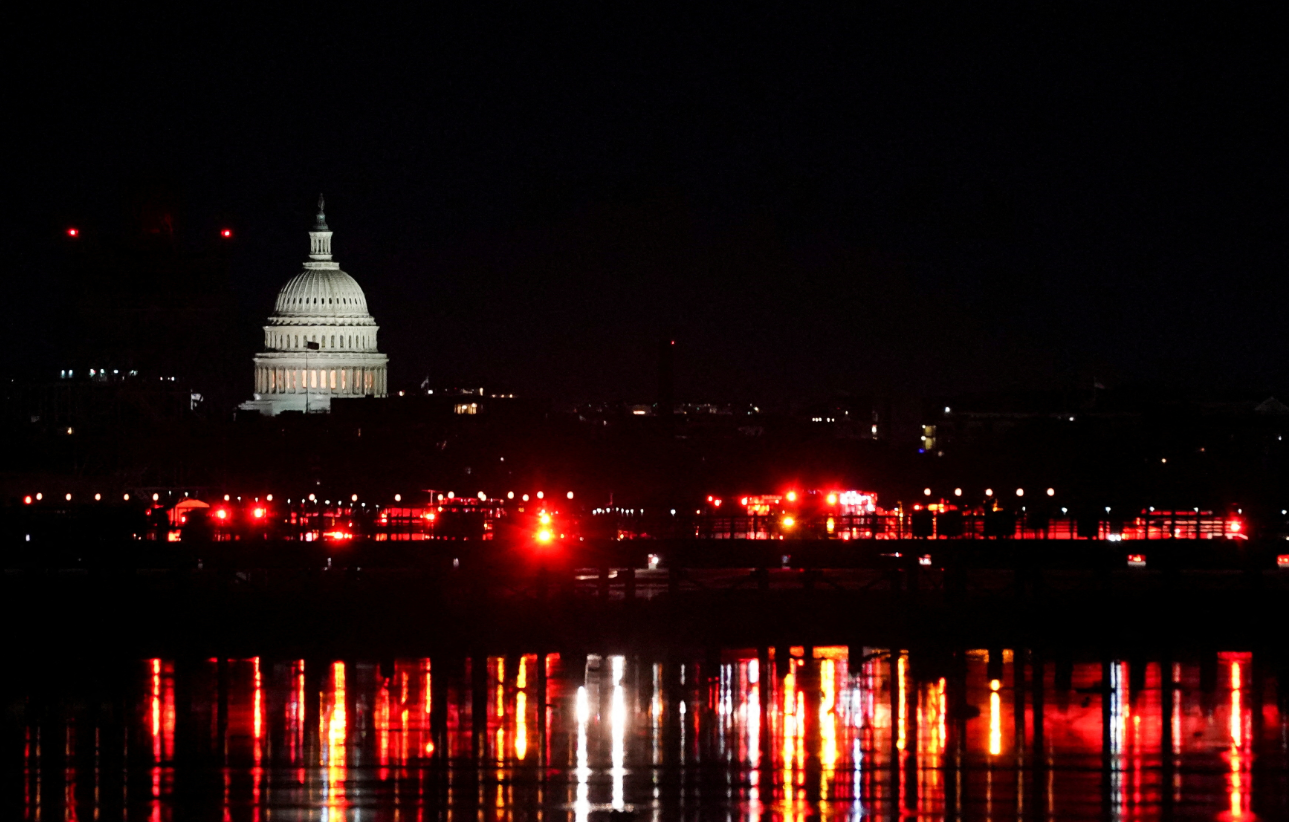
Emergency personnel work near the site of the crash, with the U.S. Capitol in the background, after American Eagle flight 5342 collided with a Black Hawk helicopter while approaching Reagan Washington National Airport and crashed in the Potomac River, Jan. 30, 2025.
ARLINGTON, Virginia (Reuters) — The crash of an American Airlines passenger jet and a U.S. Army Black Hawk helicopter near Reagan Washington National Airport on Wednesday highlighted issues around the congested airspace shared by civilian and military aircraft over the U.S. capital.
Scores of people were feared dead after the regional passenger jet with 64 people on board and the military helicopter collided and crashed into the frigid Potomac River.
Officials provided no death toll from Wednesday night’s collision but U.S. Senator Roger Marshall of Kansas, from where the flight was traveling, suggested most if not all those on board had been killed.
“It’s really hard when you lose probably over 60 Kansans simultaneously,” he told a press conference at Reagan airport in the U.S. capital early on Thursday.
“When one person dies, it’s a tragedy, but when many, many, many people die, it’s an unbearable sorrow. It’s a heartbreak beyond measure.”
American Airlines confirmed 60 passengers and four crew members were aboard the jet. The helicopter, on a training flight, was carrying three soldiers, a U.S. official said.
Military helicopters are a common sight in the Washington region that is home to numerous military bases.
Over a three-year period ending in 2019, there were 88,000 helicopter flights within 30 miles (48 km) of Reagan National Airport, including about 33,000 military and 18,000 law enforcement flights, the Government Accountability Office said in a 2021 report.
Transportation Secretary Sean Duffy said at a press conference on Thursday that the Federal Aviation Administration would “take appropriate action if necessary to modify flight paths” to ensure adequate separation between civilian airplanes and military helicopters.
Defense Secretary Pete Hegseth said an investigation had been launched by the Army and Defense Department.
There have been several near-miss incidents at Reagan National Airport that have sparked alarm, including a near-collision in May 2024 between an American Airlines jet and a small airplane and one in April 2024 between Southwest and JetBlue airplanes.
A shortage of air traffic controllers has delayed flights and raised safety concerns across the United States. The FAA in October opened an audit into runway incursion risks at the 45 busiest U.S. airports after a series of near-miss incidents.
The Washington region has three major airports, but Reagan National is closest to the capital. Because of the short length of its runways, over 90% of flights use its main runway, making it the busiest in the U.S., with over 800 daily takeoffs and landings.
That effectively means a takeoff or landing every minute during much of the day. Reagan is the 24th-busiest U.S. airport by passengers. Congress last year approved five new roundtrip flights to Washington.
Senator Jerry Moran, who heads a Senate aviation subcommittee, told Reuters the immediate focus was on trying to save lives but that after the mission was over, Congress would investigate what went wrong.
“Then we’re going to find out what happened,” Moran said.











